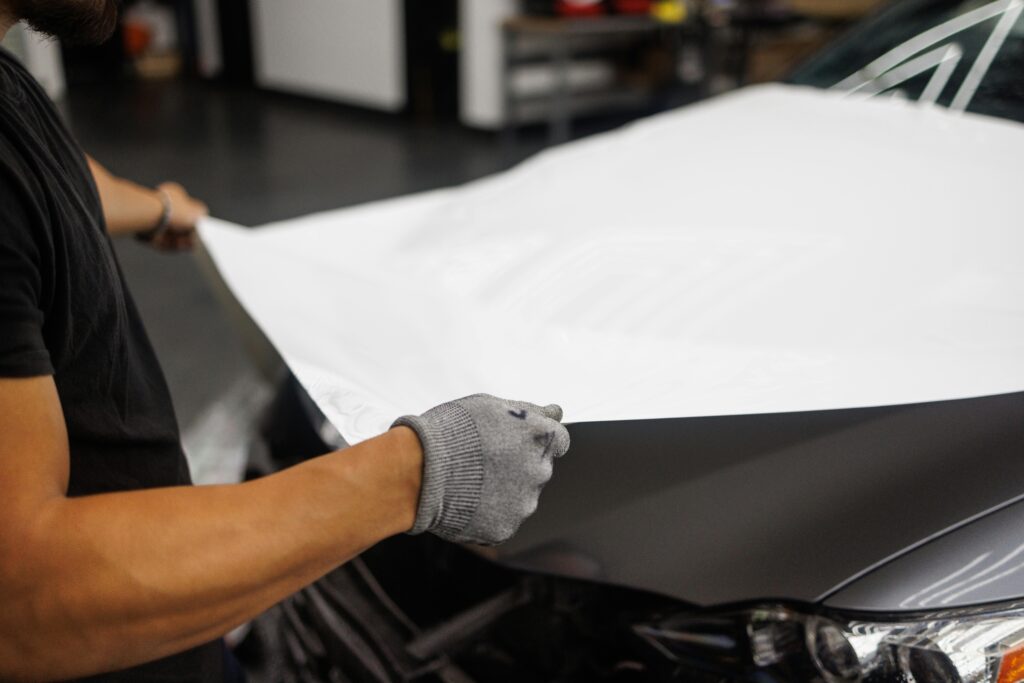If you’re a car owner looking to protect your vehicle’s appearance and resale value, you may have heard of Paint Protection Film (PPF). Known for its durability and protective features, PPF is designed to shield a vehicle’s exterior from common hazards like scratches, chips, and UV damage. But the question remains: When is the best time to apply PPF? Is it more beneficial for new or used cars? Join us as we answer these essential questions and explore the ideal timing for PPF application.
Understanding Paint Protection Film (PPF)
Before we take a look at timing, it’s essential to understand why PPF is a worthwhile investment. Paint Protection Film is a clear, urethane-based film applied to a vehicle’s painted surfaces to provide a barrier against environmental and physical damage. Modern films possess immense protective properties, making them ideal for preserving a car’s finish. PPF technology absorbs the shock of road debris and rocks, preventing small dents and scratches. Additionally, these films possess self-healing properties, meaning that small scratches and swirl marks will disappear over time.
Benefits of Applying PPF
PPF offers numerous benefits to car owners:
- Scratch and Chip Protection – Guards against road debris, minor accidents, and daily wear.
- UV Damage Prevention – Prevents fading and oxidation from prolonged sun exposure.
- Self-Healing Properties – Repairs minor scratches with exposure to heat.
- Enhanced Resale Value – Maintains the car’s exterior quality, attracting higher resale values.
With these benefits, PPF is a valuable investment, particularly for car owners who prioritize vehicle aesthetics and longevity.
Best Time to Apply PPF: New or Used Car?
Now that we have established the importance of PPF, many car owners may be wondering: is it right for my car? Let’s take a closer look at some scenarios where PPF may be warranted:
New Cars
Applying PPF to a new car is optimal for the longevity of the vehicle’s paint job. New vehicles come with a pristine, scratch-free finish optimal for PPF installation, as the film will adhere more smoothly to an untouched surface. This protective layer will also act as an immediate shield against damage, protecting the vehicle’s new appearance.
Used Cars
Used cars can also benefit significantly from PPF. For vehicles with minimal paint damage, PPF is a preventative measure that halts further deterioration, providing long-lasting protection against environmental damage. For vehicles with more significant paint damage, PPF still halts the deterioration of the paint job. However, the PPF may be more challenging to apply. Regardless, these films protect user cars from additional wear and tear, reducing the need for costly repairs and repaints.
Ultimately, PPF benefits both new and used cars, offering superior protection against common road hazards.
Types of Cars That Benefit Most from PPF
Beyond new and used vehicles, PPF is also beneficial for other vehicle categories. For example, luxury car owners often prioritize keeping their vehicles in showroom condition, making PPF an ideal choice. With a higher resale value at stake, protecting these vehicles from scratches, dings, and UV exposure is crucial.
Additionally, sports cars or racing vehicles are often more vulnerable to debris and bug splatter due to the high speeds they drive. PPF can shield these cars from the damage of frequent, high-speed driving.
SUVs, trucks, and adventure vehicles are frequently exposed to rougher environments, like mud pits or gravel. PPF’s added protection can significantly benefit these vehicles.
Considerations for Timing the PPF Installation
Before you apply PPF, there are a few timing considerations to keep in mind.
Condition of the Car’s Paint
While new cars are ready for PPF immediately, used cars may need additional preparation. Used vehicles with light scratches or swirl marks may benefit from a paint correction service before applying PPF, ensuring a smooth, clear finish that the film can protect. This gives the PPF a smooth surface to adhere to, leading to a stronger bond.
Climate and Environment
If you live in an area with harsh weather conditions—extreme sun, heavy rain, or snow—it’s worth considering PPF installation sooner rather than later. PPF offers excellent UV protection, which helps in sunny regions and acts as a barrier against road salts and debris for those in colder climates. However, avoid applying PPF on an extremely hot or cold day, as this can impact the flexibility of the film.
Usage Patterns
Consider how often and where you drive. If your car is a daily driver, regularly exposed to parking lots and road hazards, PPF installation early on is advantageous. Alternatively, if you don’t take your car out much or it is primarily garaged, you may want to put off applying PPF for a while, but installing it sooner will still preserve the paint’s condition when it’s out.
What is the best time to apply PPF?
So, when is the best time to apply PPF? The answer largely depends on your vehicle’s age, condition, and how you intend to use it. New cars benefit from quick PPF installation to maintain their pristine paint job. Ultimately, PPF is a valuable investment for all car owners who value their vehicle’s long-term appearance and resale value.
Wraptitude Can Help!
For more information on PPF installation or to discuss the best options for your vehicle, contact us at Wraptitude to learn more about how PPF can enhance your car’s appearance and protect your investment.

